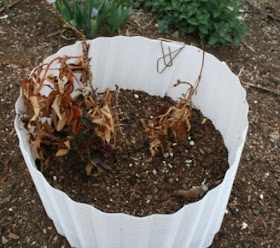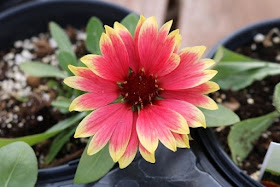This past fall and winter has been tough on our lawns. Last October and November were very warm and dry and included an 80° day in mid-November. In addition, we've had a lot of wind this spring. Wind can take moisture out of our trees and lawn very quickly and while we know that we should water during warm, dry days in fall and winter, most of us don't. All of these conditions create stress on our lawns. Stressed lawns invite disease and insects, which is why you're seeing large patches of dead grass in your lawns.
In many cases, the large patches of dead grass is the result of lawn mites. Mites in the lawn thrive under dry conditions and can severely damage the lawn. You can get rid of the spider mites by watering regularly. You can also spray the lawn with a product which contains bifenthrin. Getting rid of the mites will take the stress off your lawn and some areas may recover. It's best to rake up all the dead grass with a leaf rake. If you don't see grass starting to come back in a few weeks, you can re-seed the lawn or lay down sod.
Lawn grubs can also cause spring damage to your lawn. Check for grubs by lifting the sod near the damaged area. Grubs are normally milky-white in color and will curl up when disturbed.
If you determine the damage is caused by grubs, you can spray the lawn now with Spinosad to kill existing grubs.
Apply Grub Free Zone in June or July to help reduce next years grub population. Lawn diseases are another major contributor to dead patches in your lawn this spring. Lawn disease problems begin and end in the soil your grass is growing in. Aerate your lawn spring and fall, paying particular attention to the diseased areas. In addition, apply Humic Acid to the lawn. This will help build the soil and make your lawn healthier. Lawn problems can be difficult to identify. The best way to figure out what's going on is to bring a sample of your turfgrass to our Diagnostic Center.
A good sample would be about as big as a sheet of paper with 2" to 3" of soil and would show the transition point from good grass to bad grass. Once we look at your sample, we can figure out what's going on and prescribe a fix.





































